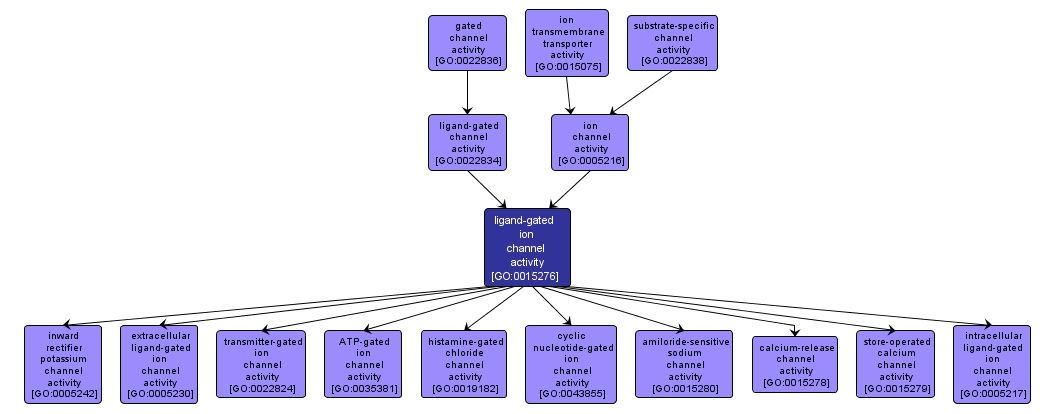GO TERM SUMMARY
|
| Name: |
ligand-gated ion channel activity |
| Acc: |
GO:0015276 |
| Aspect: |
Molecular Function |
| Desc: |
Catalysis of the transmembrane transfer of an ion by a channel that opens when a specific ligand has been bound by the channel complex or one of its constituent parts. |
Synonyms:
- ionotropic neurotransmitter receptor
|
|

|
INTERACTIVE GO GRAPH
|














